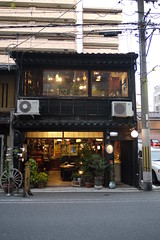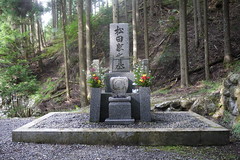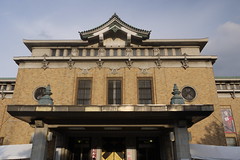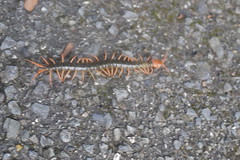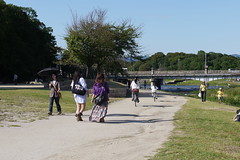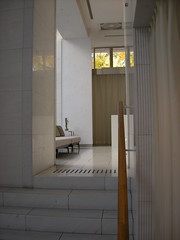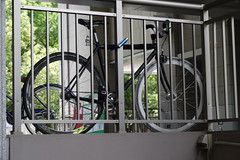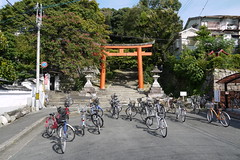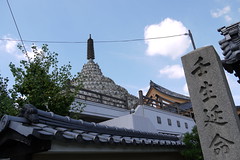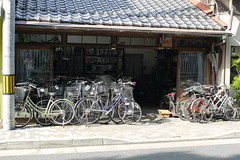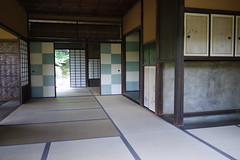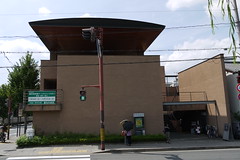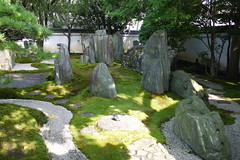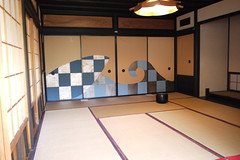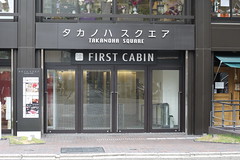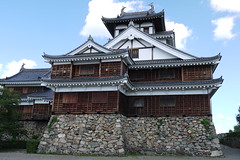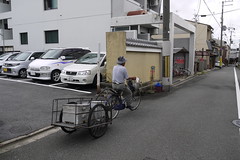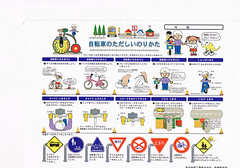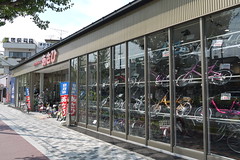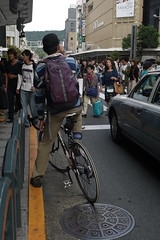 河原町の自転車走行禁止区間
河原町の自転車走行禁止区間Ordinarily, we would have a bit of sympathy for a fellow cyclist stuck in a mess of cars and pedestrians.
However, the area around Shijo - Kawaramachi, in Kyoto, is off limits, even on the street itself.
Having done this ride a few times, it isn't worth the stress.
This picture was taken on a Sunday, at a peak shopping time, but any day would see similar traffic.
Cycling is prohibited in the following streets:
Kawaramachi Dori: Between Oike Dori and Bukkoji Dori
Shijo Dori: Between Higashi Oji Dori and Karasuma Dori
Sanjo Dori: Between Kiyamachi and Kawaramachi
Cycling along the Teramachi Mall is also prohibited.
The verboten areas are actually more extensive than that. Downtown there are signs with red marking the no go areas.
And there are officious folks in green uniforms who will tell you to "Get off and walk"!
© CycleKyoto.com
Tags
Japan
Touring
Kyoto
Cycle
Kawaramachi
